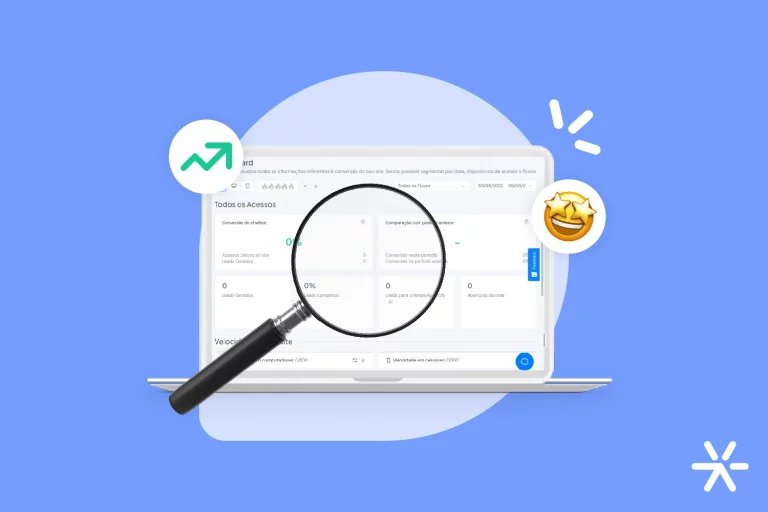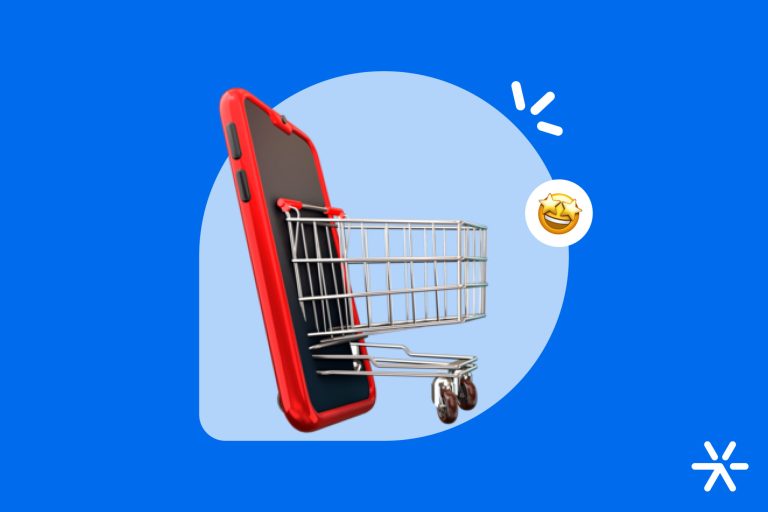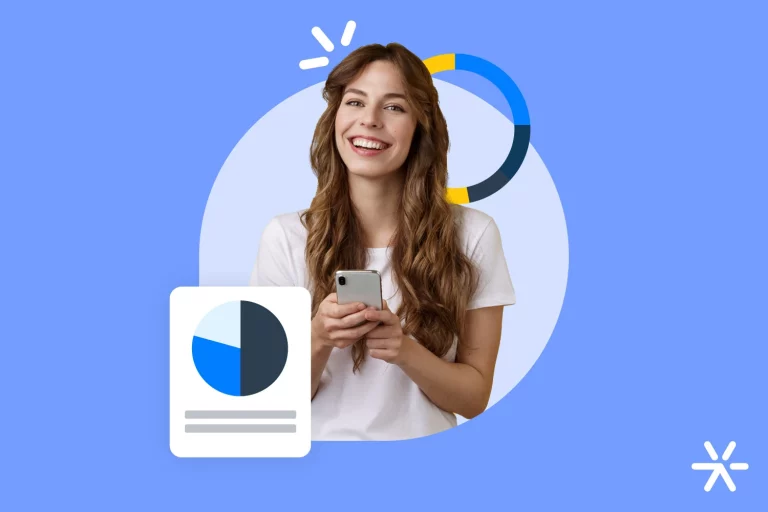How to Capture Sales Qualified Leads in 2024
How many times has your company’s sales team had to chase new contacts, often losing efficiency and performance by working with unqualified leads?
Capturing leads, especially those aligned with the ideal customer profile, is what fuels the sales team’s work, allowing them to focus their efforts where the real opportunities lie.
If you want to intensify lead generation for your company, continue reading the article and learn from those who understand the topic!
What is a lead?
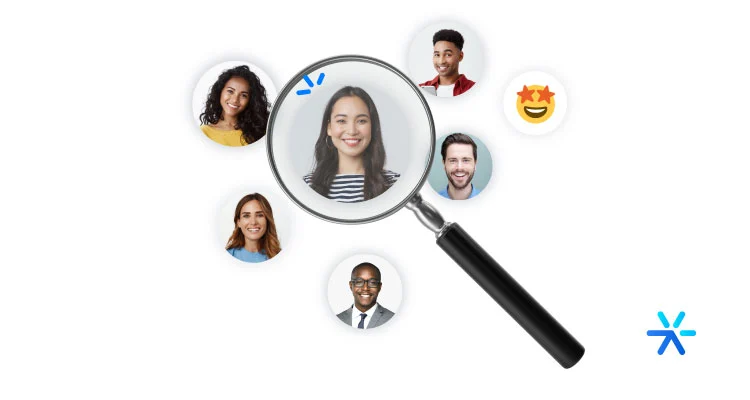
A lead is a potential customer. We can call anyone who shows interest in your solution and provides contact information to your company a lead.
There are qualified and unqualified leads, as well as leads at different levels of purchase maturity.
What is lead capture?
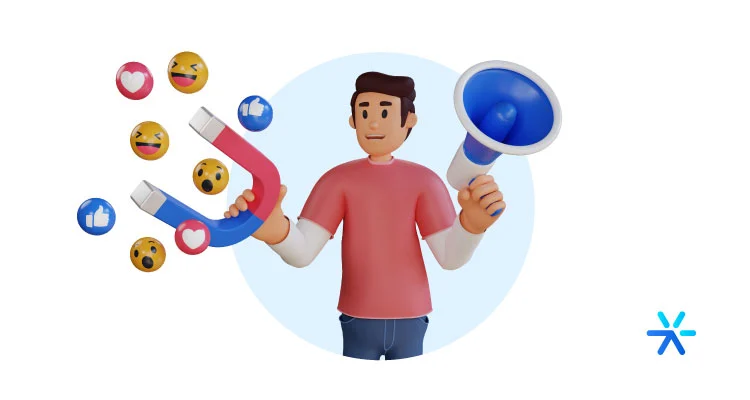
Lead capture is the process related to attracting visitors’ attention, offering something of interest, and exchanging these resources (which can be exclusive content, a consultation, a demonstration, or an offer) for the consumer’s personal data, with the purpose of including them in the sales funnel, creating a direct relationship with the brand, and, at the right time, making the sales approach.
The processes involved in this capture
There are many ways to work with lead capture.
Below you will find some possibilities:
Attraction baits or Lead magnets
Attraction baits are offers that will pique the visitor’s interest in converting into a lead.
These baits should be aligned with consumers’ interests and with the stage of the sales funnel they are in.
Some examples of baits are e-books, exclusive tools, webinars, discounts, demonstrations, free trials, consultations, etc.
Lead Capture Pages/Landing Pages
Landing Pages are pages that are created with a very clear conversion goal in mind.
Most companies use capture pages (Landing Pages) as a way to deliver these attraction baits.
However, this is not the only way to make offers available, as we will see shortly.
Forms
Forms are resources inserted into Landing Pages or other pages of a website so that visitors can provide personal contact information.
With this data in hand, your company can start a closer relationship and the qualification work through the marketing and sales funnel.
Forms can be static or interactive.
In any case, remember that the information requested in the forms should be aligned with the value of the offer.
However, here’s a tip: forms have long ceased to be a good option for capturing leads. If you still don’t believe it, let’s go over 4 reasons why forms are dead:
- Static forms don’t generate interest – that “contact us” model no longer has an effect on visitors because it doesn’t show if there will be a quick response from your company or not. Nowadays, people need quick answers, almost instantly.
- Forms with many questions have low conversion rates – let’s be honest, just seeing a page with many questions makes you lazy. Once again, users want something objective, quick, and attention-grabbing.
- Forms with few questions don’t provide interesting information for the strategy – what good is a form with just name and email, for example? Well, for nothing. You don’t need to overdo the number of questions, but make sure you’re asking the right ones to qualify your lead.
- Consumers need interactivity and personalization – caring about customer service and experience is essential for capturing leads. Therefore, with personalized service, the lead has a better chance of converting after resolving doubts and establishing a dialogue with the brand.
So, let’s move on to our next point: chatbots – especially those focused on marketing and lead conversion.
Chatbots
The chatbot works through texts, predefined scripts, and artificial intelligence systems that generate automated conversations between the tool and consumers.
They can be used to capture information, answer questions, assist in sales processes, offer personalized content, and even process payments.
They are tools for customer service, communication, automation, and also data storage – and can replace forms in the lead capture process.
Lead nurturing
Often, attracting leads and creating direct communication with them is not enough to encourage them to buy or contract with your company.
And that’s where lead nurturing comes in.
Contact nurturing works to build a relationship between the brand and potential consumers and to guide them through the sales funnel or buying journey.
Read also: How to Reduce Lead Response Time to Increase Sales and Customer Satisfaction
Why does every business need lead generation techniques?

Lead generation is related to the complete sales funnel strategy.
This stage is crucial for generating business opportunities and working with consumers with different needs and at different stages of purchase maturity.
It is through lead generation techniques that companies can obtain personal information from contacts who are potential customers.
And the best part is that this data is provided by the consumer themselves, attracting leads more interested in the offered solution and creating a bond of trust and relationship between the person and the brand.
How to capture leads?
You already know how lead capture works, why it’s important, and some resources that can be explored in this journey.
Now let’s go through the step-by-step process of bringing or improving this strategy for your company?
Define your goal according to the sales funnel stages
It is essential to know how to capture leads at different stages of the sales funnel with the right communication, tools, and baits.
After all, a top-of-funnel lead doesn’t have the same challenges and desires as a bottom-of-funnel lead.
Keep in mind that the funnel is divided into three stages:
- Top of funnel: focus on attracting attention, generating awareness, and traffic to your site or pages;
- Middle of funnel: focus on capturing and nurturing leads;
- Bottom of funnel: focus on showing the value of your product and converting leads into customers.
Determine the offers for lead generation
With this initial sales funnel planning in hand, you should determine at least one offer for each stage.
This way, you capture visitors with different interests and purchase maturities, who come to your pages.
Remember that the offers must be interesting to the lead at the moment they are in.
Define where lead capture will take place
Now that you understand your consumer’s needs in the three funnel stages, have defined what the baits will be, it’s time to think about how to make them available to your audience.
You can offer materials, discounts, consultations, or free trials through Landing Pages, static forms, or chatbots.
Learn more: 16 Best Landing Page Tools for Lead Generation
Integrate your platforms
With the offers set up and support materials schematized, make sure how the data of the leads that convert will be stored.
Moreover, platform integration is essential so you can work on next steps like nurturing and directing qualified contacts to the sales approach.
Integrate the tool that will capture leads with other tools like marketing automation, CRMs, email marketing dispatchers, reports, etc.
Promote your baits
All set?
Now you need to get visitors to your baits.
To drive traffic to your Landing Pages, site, or forms, you need to promote them on the brand’s communication channels.
Use what you already explore and where your target audience is.
Here banners on the site, posts on social media, WhatsApp and email, ads on social media or Google, among other ways of promotion.
The important thing is to bring qualified visitors there.
Monitor and adjust your sales lead capture
All previous steps can be improved even after the launch of your bait.
So, monitor the results, understand what’s working and what’s not, test, and apply the identified improvements.

How to capture leads on Facebook?

It is possible to generate leads directly on Facebook, without the user having to leave the social network to provide data in exchange for some capture bait.
To do this, you can explore an ad feature within Facebook Ads, called Facebook Leads Ads.
With it, you select desired segmentation, configure an ad, and attach to it a data capture form.
How to capture leads on Instagram?

Leads Ads is a format that can also be applied to Instagram since the platform is part of the same company as Facebook.
With the lead capture-focused ad option, you catch the attention of users browsing the social network, make the bait offer, and convert them into leads, obtaining personal data without them needing to leave Instagram.
Remember that in both cases, on both Facebook and Instagram, the forms are static.
How to capture leads via email?

If you already have an email list of your leads, communication through this channel can be explored.
And it’s still very powerful!
Some ways to capture leads via email are to explore this already built base for referral actions and programs, as well as using other channels to ensure new emails, such as pop-ups, newsletter forms on the site and social networks.
Email can also be one of the data requested in forms, Landing Pages, and chatbots.
8 tips for creating the perfect lead capture page
Now that you know how to capture leads on various platforms, let’s go over some strategies to improve the process.
We’ve selected 8 tips so you can make your pages even more interesting and attractive to your visitors:
Use chatbots to multiply your results in lead capture
These tools improve conversion rates since they are more attractive than static forms and make users more comfortable in providing contact information, through personalized service and fluid dialogue between brand and consumer.
Through personalized approaches, lead generation increases by up to 202% (Source: Hubspot).
Leads also have better qualification through the same tool since more in-depth and relevant information is obtained from the start of the interaction, allowing for a more strategic knowledge of each generated contact’s profile.
Evaluate the information requested on the page
We’ve already mentioned it, but it’s worth reinforcing: the requested data must be aligned with the sales funnel stage and the connection level of that lead with your brand and solution.
Many companies make mistakes by wanting too much information, and this ends up hindering conversion.
For example, if you are offering a top-of-funnel e-book, asking for information related to budget, purchasing power, or even related to the interest in your solution will make the visitor hesitant and end up not filling out the form or chatbot.
Monitor your traffic sources
Do you know where your visitors come from?
This information is crucial, especially if you advertise your baits on multiple channels.
So, monitoring the origin of your visits and leads is essential for your strategy.
You will be able to identify the channels that bring more results and invest more in them.
Segment the leads you capture
Segmenting the leads you capture into different lists will make all the difference in the nurturing and qualification strategies that happen afterward.
Use the form questions already thinking about these segmentations.
You also need to know at what stage of the sales funnel the lead is to know if it is already time for the sales approach.
Use A/B tests to optimize conversion
A/B tests present two versions of the same material but with small modifications in a variable, such as some text element, visual, or even functionality.
The two versions are applied to the audience during a test period, and then the one with the best performance continues as fixed.
This type of strategy helps understand what is better accepted by the audience.
You can apply the A/B test, analyze the conversion rates of the test, and then invest in the one with more satisfactory results.
Have an optimized design for mobile
Make sure your conversion pages or lead capture tools are adapted for different devices and screen sizes.
Without this, you can lose leads that come through this type of access.
Don’t forget the CTA
The CTA (Call to Action) serves to indicate and guide the visitor to the action that your company wants them to take.
If your goal is for the visitor to take some action after contacting your conversion materials, you need to make that clear to them, right?
Explore short CTAs with visual emphasis, action verbs, and clear for decision-making.
Invest in quality content
Content influences how the visitor is stimulated regarding your offer.
So, invest in this part, both in the material your lead will have access to and in the text writing of the Landing Page, forms, chatbots, and promotion of your lead capture bait.
You may also like: What is CRO? 3 Letters That Will Double Your Lead Generation
Frequently Asked Questions about Lead Capture

What is a lead capture form?
A lead capture form is a resource with fields that must be filled out by the visitor, usually in exchange for something, be it an offer or a conversion bait.
The form is used to capture the requested data and turn a visitor into a lead.
But what they don’t tell you is that using a form to capture leads is doomed to fail. Why?
Well, forms have a low conversion rate, do not have enough information for qualification, and do not have any differentials for each user.
Remember that people need interaction, so opting for a marketing chatbot is ideal.
How to create a lead capture form?
You can create your own form with the help of specific tools designed for this purpose, as well as create your version from scratch with the work of a programmer.
But, friend’s tip: you can replace forms with other capture alternatives, such as chatbots. Don’t forget that the form is static, not customizable, and outdated.
Where to use the lead capture form?
Lead capture forms can be used on different lead capture pages of the brand, such as website, blog, Landing Pages, social networks, and ads.
Even though you can use forms on various channels, think that they will always be the same. Opt for chatbots, which, in addition to being present on several pages, are customized for each one.
What to do with captured leads?
The data of the captured leads must be stored securely and responsibly.
In addition, segmentation lists should be created according to the obtained data, profiles, sales funnel stage, and qualification.
Leads can and should also be nurtured with other materials and communications from the brand, for relationship building.
Qualified leads, who are already in the purchase decision phase, should be forwarded for commercial department approach.
How to generate qualified leads?
You can check how to generate qualified leads and what to do after this capture in the complete post: “Lead Qualification: Tips from Experts to Receive Hotter Leads.”
We’ve reached the end of our strategic content!
But, I still have one crucial tip for you who are thinking about how to capture leads for your business.
Forget the contact form, and receive 3x more leads from your Site through Leadster’s Chatbot!



